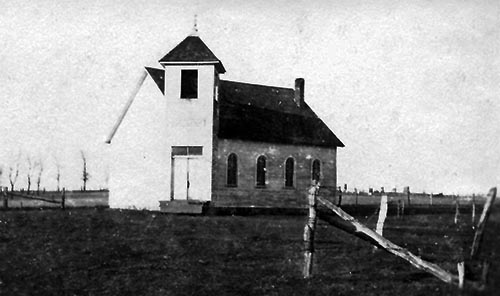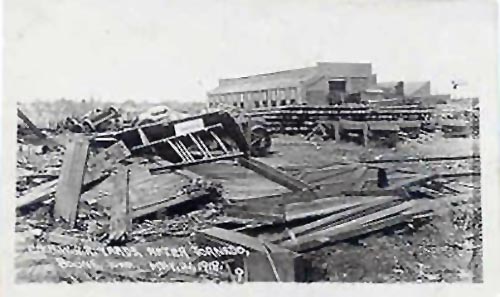Building Bethel
Boone County, Iowa
Emma Husar
5/21/1918
In the first years of the twentieth century, several families began to meet in the Centennial School house to share in their Christian faith. However as the group grew they began to seek out a separate structure to house their faith. “On December 21, 1907, a meeting was held at Herman Finestead’s home to make plans for building Bethel Church.” In Boone, Iowa, construction began on February 2, 1908, between a creek and the Pleasant Hill cemetery. Bethel, as it was known, was formed with the help of generous donations from several parties: Daniel H. and Susan Nolan donated the land and James Quincy Stumbo made other material contributions. During the construction, people banded together to cut down trees for lumber, to haul rocks, and to collect more lumber from town. Bethel Church was dedicated in April 1909, and by 1910 a parsonage was built by James Quincy Stumbo a fourth of a mile north and east of the church. However, only ten years later their work proved to be in vain.

The Boone News-Republican notes that “The location of Boone east of the Des Moines River was thought to protect it from cyclones, since they usually run from southwest to northeast.” Residents of Boone were confident that a cyclone would never hit; they were comfortable in their safe haven in blissful unawares. Unfortunately, “the tornado of 1918 was an exception [to that rule]—it jumped the river.”
On May 21, 1918 a storm began to rage—lightning brilliantly lit the sky amidst “great masses of black, then grey, and at times almost fiery red clouds.” The tornado was especially characterized by its “great roar” that an eyewitness claims sounded like, “a hundred mogul engines.” This thundered into Boone from the southwest around 3:45pm and people in the city of Boone are said to have watched, for about ten minutes, the impending madness in the sky. Then it hit.

The Chicago & Northwestern railroad yards were hit the hardest, damages reaching upwards of $250,000. All trains on three of its lines were canceled. It did not stop there. “Houses were tossed about….Barns and sheds were carried through the air, people were picked up… livestock [and chickens] were scattered about and…killed.” There were three total tornadoes that day, but all the real destruction resided in Boone County. Nine people died; between 55 and 80 were severely injured. The Eleanor Moore hospital was so full that they had a shortage of nurses.
“The day became almost black as night as the storm engulfed the east end of the town…” And where the Bethel Church and parsonage so recently stood, only the floor and foundation remained. Even the Centennial School was gone. The Boone News-Republican noted, “the ruin at Bethel covered the destruction of the beautiful church and the routing of cemetery headstones, which added to the gruesomeness of the plight.”
Following this frightening day, however, the residents of Boone are said to have “found the silver lining in those black clouds.” It brought them together in a spectacular act of community. They all cleaned debris and cared for survivors. “Donations of clothing, shoes and furniture were received and men even turned over vacant houses, garages, suites of rooms…for the people to occupy until houses were secured for them.” Money was raised by Iowans to cover the total damage of more than half a million dollars in Boone alone. The men at the church too united in order to clear the wreckage of their church and to plan the rebuilding of Bethel. According to Bethel Church’s website, “The new church was built on the same foundation” quickly following the disaster.
The more people on a site, the more evident wreckage there will be. But it is also true that the more people, the more unified they become in order to repair and fortify what had broken
